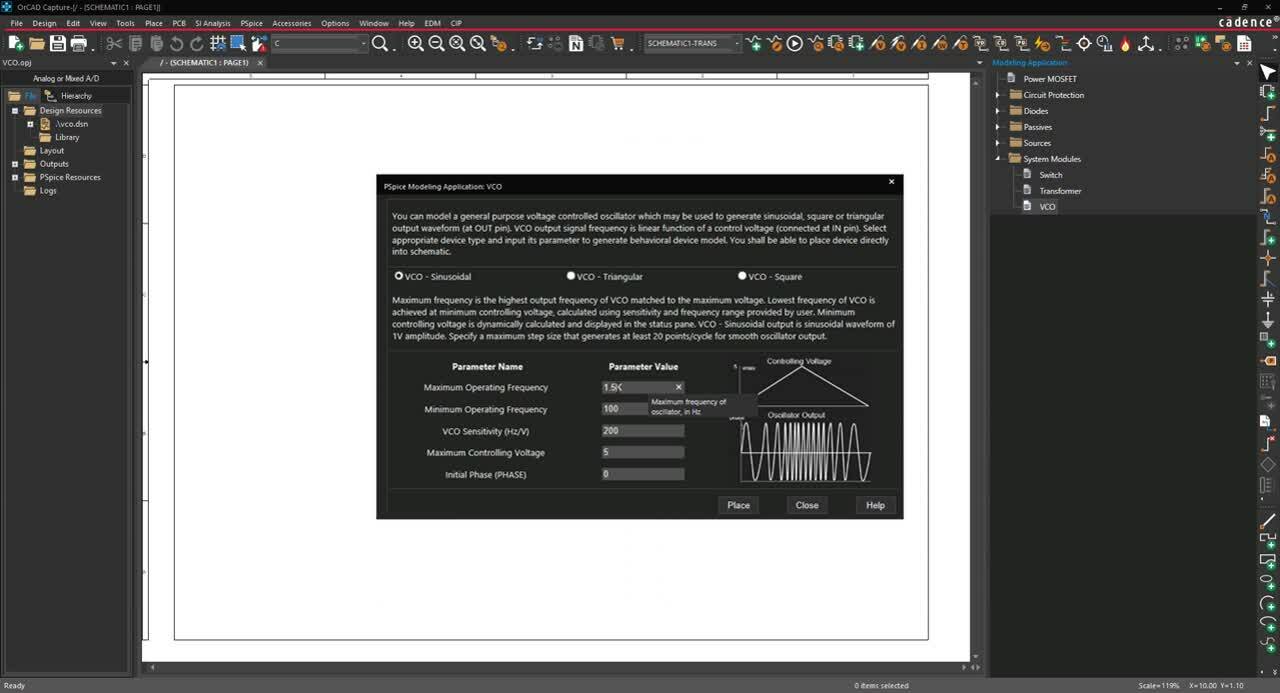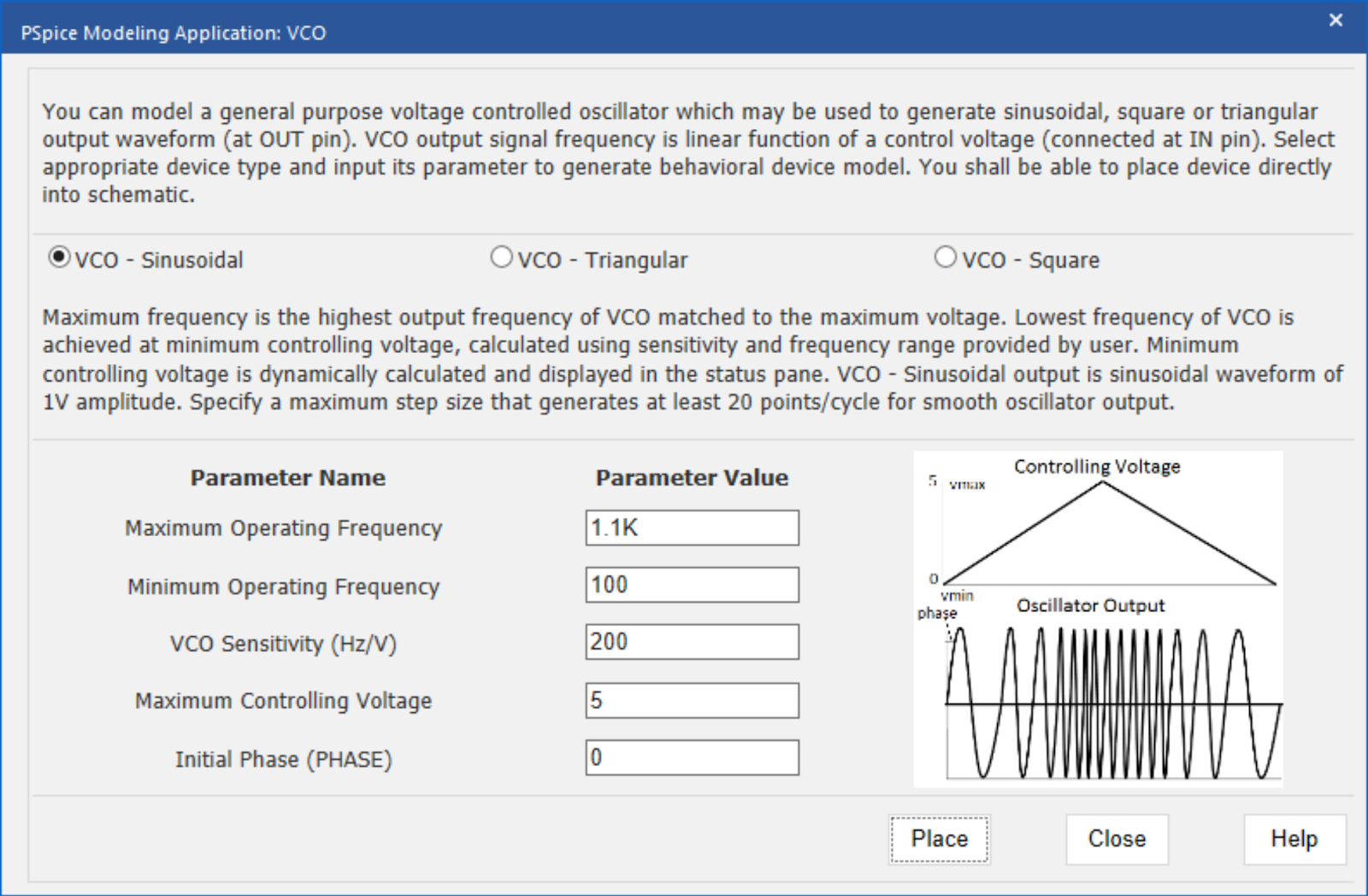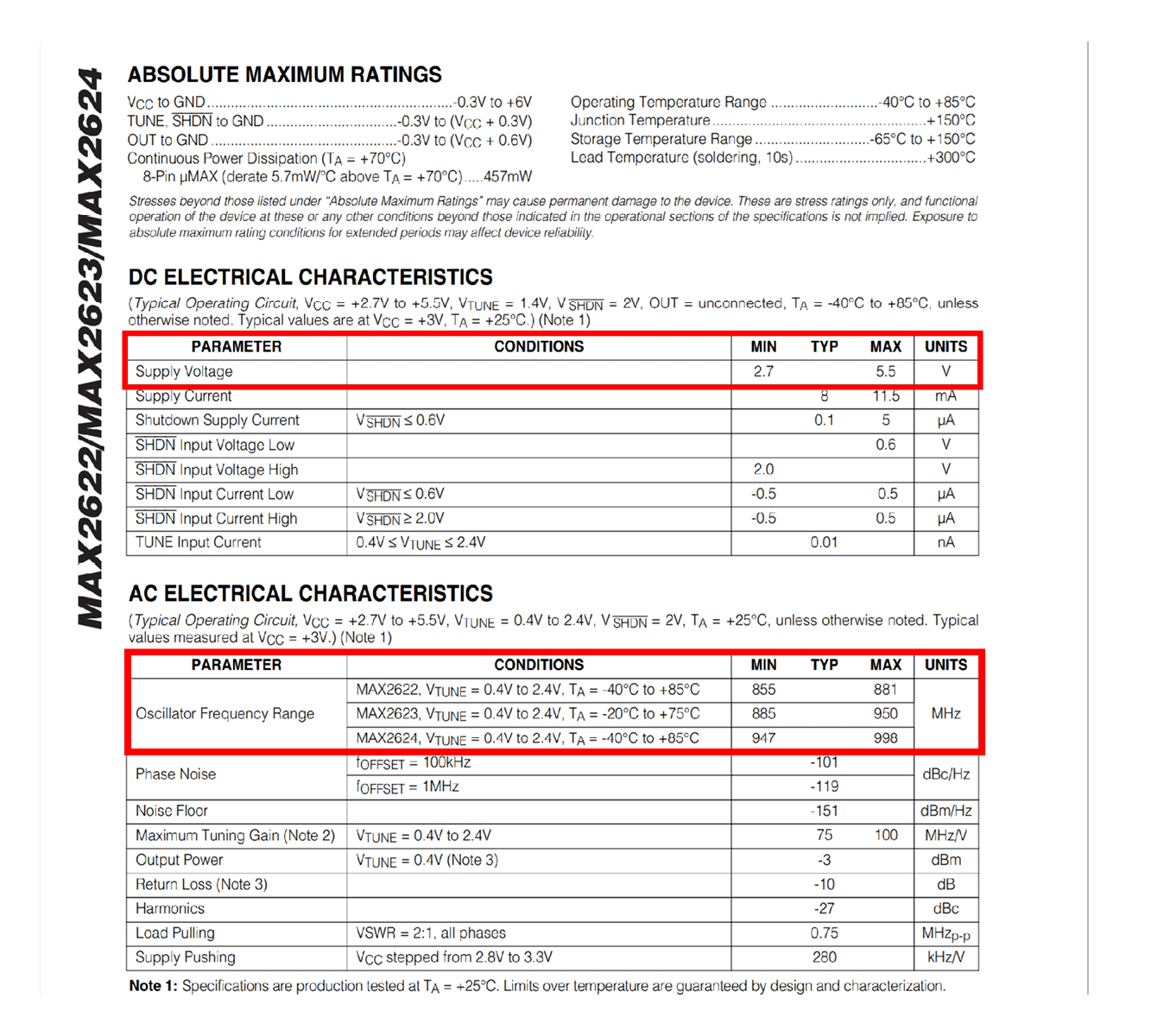
Modeling designs helps engineers verify whether their circuit will function as intended. Modeling programs simulate circuit behavior under different conditions and in accordance with the design requirements, allowing engineers to better plan and build circuits.
Typically, to model components, generic models are used, which produce inaccurate and unrealistic simulations based on ideal conditions. This can cause functionality issues to go undetected until far later in the design process. To confidently simulate a component, create a voltage-controlled oscillator SPICE model (VCO SPICE Model) using specifications from a manufacturer’s datasheet.
What is a Voltage-Controlled Oscillator?
A voltage-controlled oscillator (VCO) is an oscillator with an output whose frequency is proportional to an applied voltage. VCOs are widely used in applications such as Function Generators, PLLs, Frequency Synthesizers, and more.
What is Needed to Model Voltage-Controlled Oscillator?
To create the required exponential source for simulation, there are two items that must be defined:
- Type
- Which type of waveform is required: Sinusoidal, Triangular, or Square?
- Data Points
- What are the critical signal values to create the desired waveform?
This information must be obtained or calculated and incorporated into the SPICE simulation model which can be achieved by manually creating or editing a text file. Keep in mind if the model created does not produce the intended outcome or if a part is changed, values will need to be re-calculated and edited manually. This manual process to produce the desired model is time consuming and increases the likelihood of errors; however, the PSpice Modeling App provides a fast, easily-configurable, and fully-integrated method to create a voltage controlled oscillator SPICE model for simulation.
Creating a Voltage-Controlled Oscillator SPICE Model with PSpice
The VCO modeling application quickly creates a voltage controlled oscillator SPICE model with a wizard-based approach. The necessary specifications are predefined and users can easily input the required parameters such as:

- Type:
Select either a Sinusoidal, Triangular, or Square waveform.
- Maximum Operating Frequency (Fmax):
Specify the maximum frequency of the oscillator. This is defined on the manufacturer’s datasheet.

- Minimum Operating Frequency (Fmin):
Specify the minimum frequency of the oscillator. This is defined on the manufacturer’s datasheet.
- Maximum Controlling Voltage (V2):
Specify the maximum input voltage which produces the highest oscillator frequency. This is defined on the manufacturer’s datasheet.
- Initial Phase:
Specify the initial phase of oscillator output.
- VCO Sensitivity:
If not specified by the manufacturer, the VCO Sensitivity can be calculated with the following equation: (Fmax-Fmin)/(V2-V1), where V1 is the minimum controlling voltage. If the VCO Sensitivity is known, the controlling voltage range is automatically calculated by the modeling application.
Using the inputted information above, the PSpice Modeling App generates a schematic symbol and automatically associates the newly created voltage-controlled oscillator SPICE model without leaving the OrCAD Capture environment. The PSpice Modeling App also automatically manages the simulation profile configuration, eliminating any library set up for simulation.
Get step-by-step instructions for creating VCO SPICE models at EMA Academy and download the Free Trial of OrCAD to try it yourself.











